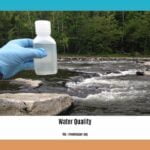When it comes to construction materials, the choice of sand plays a crucial role in determining the overall quality and durability of a structure. In this article, we will delve into the topic of river sand and its suitability for construction purposes. By analyzing the advantages and disadvantages of river sand, we aim to provide valuable insights for those involved in the field of construction and infrastructure development. Whether you are looking for a comparison with other types of sand, an understanding of its impurities, or the importance of construction materials testing, this article will serve as a comprehensive guide. So, let’s explore the fascinating world of river sand and uncover its potential for sustainable construction practices.
Key Takeaways:
- River sand has advantages such as being naturally coarse and containing beneficial minerals for plant growth.
- It drains well and does not compact easily.
- However, river sand can have drawbacks including the presence of harmful fines and dust particles.
- It can erode easily.
- M sand is an alternative to river sand and is highly cohesive and compressive in strength.
- It has lesser impurities and allows for controlled gradation, resulting in better quality concrete.
- M sand is formed from crushed rocks like granite and limestone.
- River sand is preferred in construction due to its strength, stability, and uniform particles.
- It is denser than regular sand and easier to work with.
- River sand can be used for various construction purposes.
- Its quality can be tested before use to ensure suitability.
- Proper storage is important to prevent contamination and maintain quality.
Advantages and Disadvantages of River Sand for Construction

As a seasoned civil engineer in the construction industry, I have had the opportunity to extensively analyze and evaluate the benefits and drawbacks of various construction materials. In this article, I aim to provide you with a comprehensive understanding of the advantages and disadvantages of river sand in construction projects.
Advantages of River Sand
River sand offers several advantages that make it a favorable choice for construction purposes. Firstly, its natural coarseness allows for good drainage and prevents easy compaction. This characteristic ensures stability in various applications, such as concrete production, brickwork, and blockwork.
Moreover, river sand contains a high amount of minerals beneficial for plant growth. This makes it an ideal choice for projects that involve landscaping or gardening. The presence of these minerals nurtures the soil and promotes healthy plant growth, resulting in captivating green spaces.
Additionally, the particles of river sand are uniform and densely packed, making it easier to work with during construction activities. Its strength and stability are highly regarded, providing assurance that structures built with river sand will stand the test of time.
Disadvantages of River Sand
Although river sand possesses numerous advantages, it is important to consider its disadvantages as well. One significant drawback is the presence of fines and dust particles, which can be harmful to both plants and human respiratory health. These particles can result in plant root damage and cause respiratory issues when inhaled.
Another disadvantage of river sand is its susceptibility to erosion. Due to its natural composition, river sand can be easily washed away by water currents, causing instability in construction projects near water bodies. This erosion can weaken structures and compromise their longevity.
Alternatives to River Sand: The Rise of M Sand
In recent years, the construction industry has witnessed the rise of M sand (Manufactured Sand) as a viable alternative to river sand. M sand is produced by crushing rocks like granite and limestone, resulting in a sand-like substance with lesser impurities and more uniform particles.
One significant advantage of M sand is its controlled gradation, specifically in the Zone-II range. This makes M sand highly suitable for the production of high-quality concrete. Its superior cohesiveness and compressive strength contribute to the durability and performance of concrete structures.
Though M sand offers commendable qualities, it is essential to carefully evaluate its feasibility in specific project requirements. Each construction project has unique demands, and considering various factors such as cost, availability, and environmental impact is crucial before deciding between river sand and M sand.
Conclusion
In conclusion, the advantages and disadvantages of river sand need to be carefully reviewed when making construction material choices. While river sand’s natural coarseness, mineral content, and stability make it an appealing option, its potential drawbacks, such as the presence of fines and erosion susceptibility, should not be overlooked. As the construction industry evolves, alternatives like M sand have surfaced, offering their own unique advantages and disadvantages. With thorough analysis and consideration, making informed decisions regarding the use of river sand or alternatives can lead to sustainable and successful construction practices.
Advantages and Disadvantages of Saving Water
Have you ever wondered about the advantages and disadvantages of saving water? Well, if you are curious to know more about it, click here to explore the insights: advantages and disadvantages of saving water.
Advantages and Disadvantages of Sensors
Unlock the world of possibilities with sensors! Discover the advantages and disadvantages of sensors by clicking here: advantages and disadvantages of sensors.
Advantages and Disadvantages of Soft Water
Looking for a softer touch in your daily life? Learn all about the advantages and disadvantages of soft water by following this link: advantages and disadvantages of soft water.
Importance of Construction Materials Testing

Construction materials testing plays a crucial role in ensuring the quality and durability of a construction project. Through rigorous testing and analysis, engineers can make informed decisions about the suitability and performance of various materials, including river sand. The testing process provides valuable data that can guide the selection, design, and implementation of construction materials. Let’s delve into the key reasons why construction materials testing, including river sand, is of utmost importance.
Enhancing Structural Integrity
Construction materials testing helps in assessing the strength, stability, and overall quality of materials used in a construction project. By subjecting materials like river sand to various tests, engineers can determine their load-bearing capacity, compressive strength, and other critical properties. This enables them to ensure that the materials meet the required standards and can withstand the anticipated stresses and forces imposed on the structure. Testing helps identify any potential weaknesses or deficiencies, allowing for necessary adjustments or alternative material choices.
Ensuring Compatibility and Performance
Different construction materials interact with each other in complex ways. Testing allows engineers to evaluate the compatibility between various materials in terms of their chemical, physical, and mechanical properties. With respect to river sand, testing can help determine its suitability for specific applications, such as concrete production. The tests provide insights into the potential interactions between river sand and cement, as well as other components, ensuring optimal performance and durability of the final product.
Meeting Regulatory Requirements
Construction materials testing is essential for compliance with applicable regulations and standards. Government agencies and industry organizations often mandate specific testing protocols to ensure the safety and quality of construction projects. By conducting thorough materials testing, engineers can demonstrate that their chosen materials, including river sand, meet the required specifications. This not only helps in obtaining the necessary permits and approvals but also assures stakeholders that the project is being executed in accordance with the highest standards of quality and safety.
Identifying Environmental Impact
In recent years, there has been a growing emphasis on sustainable construction practices and minimizing environmental impact. Construction materials testing allows engineers to assess the environmental suitability of materials like river sand. By conducting tests, they can identify any potential issues related to resource depletion, pollution, or ecological harm. This information helps in making informed decisions about the use of river sand or considering alternative materials that have a lesser environmental footprint. Testing also facilitates the development of improved construction practices that prioritize sustainability and reduce the overall impact on the environment.
Ensuring Long-Term Durability
Durability is a crucial aspect of any construction project. Materials that can withstand the test of time contribute to the longevity and safety of structures. Construction materials testing, including accelerated aging tests, can help engineers predict the long-term performance and durability of materials, such as river sand. By subjecting the materials to simulated environmental conditions, they can assess their resistance to factors like moisture, temperature fluctuations, and chemical exposure. This information aids in selecting materials that will maintain their properties over time, reducing the need for frequent maintenance or premature replacement.
Key Takeaways:
- Construction materials testing is essential for assessing the strength, compatibility, and performance of materials used in construction projects.
- Testing ensures that materials, including river sand, meet required standards and can withstand anticipated stresses and forces.
- Construction materials testing is vital for compliance with regulatory requirements and obtaining necessary permits and approvals.
- Testing helps identify the environmental impact of materials and enables informed decisions about sustainable construction practices.
- Thorough materials testing allows engineers to predict the long-term durability and performance of materials, ensuring the longevity of structures.
Sources:
1. Exploring the Difference in M Sand and River Sand
2. Use of sea-sand and seawater in concrete construction: Current concerns
Advantages and Disadvantages of River Sand for Construction
When it comes to constructing buildings and infrastructure, choosing the right construction material is crucial for ensuring durability, stability, and overall quality. River sand has been a popular choice in the construction industry for centuries due to its strength, stability, and uniform particle size. However, it’s important to consider both the advantages and disadvantages of river sand before making a decision. In this article, we will explore the key advantages and disadvantages of river sand for construction, providing you with a comprehensive understanding of its benefits and limitations.
Advantages of River Sand
Strength and stability: River sand is known for its high compressive strength, making it a reliable choice for various construction applications. It provides excellent stability to structures, ensuring their longevity.
Uniform particle size: River sand has a uniform particle size distribution, which enables better workability in concrete production. Its round shape and smooth texture reduce the amount of cement paste needed, contributing to cost savings.
Permeability: Concrete made with river sand exhibits better permeability compared to concrete made with M sand (manufactured sand). This enhanced permeability allows for proper water drainage, reducing the risk of water damage and improving the overall durability of the structure.
Suitability for various applications: River sand is versatile and can be used for different purposes such as RCC work, brickwork, and blockwork. Its compatibility with different construction techniques makes it a preferred choice for engineers and contractors.
Economic potential: River sand mining can provide direct and indirect economic benefits. It creates job opportunities and income for the surrounding community and contributes to regional revenue. Sustainable river sand mining practices can harness these economic potentials while minimizing environmental impacts.
Disadvantages of River Sand
Environmental impact: River sand mining can have detrimental effects on the environment, leading to habitat destruction, erosion, and changes in river ecosystems. Uncontrolled sand mining activities can disrupt the natural balance, causing serious consequences for aquatic life and biodiversity.
Limited availability: River sand availability can vary based on location and geological factors. In some regions, the demand for river sand exceeds the natural replenishment rate, leading to scarcity and increased costs. This limited availability can pose challenges for construction projects, especially in areas where alternative materials like M sand are less accessible.
Sustainability concerns: With increasing emphasis on sustainable construction practices, the environmental impacts of river sand extraction are being closely scrutinized. The extraction process can lead to the depletion of riverbeds, affecting local communities and wildlife. Exploring alternatives like M sand can help alleviate these sustainability concerns.
Potential building code restrictions: In some regions, building codes and regulations may restrict or discourage the use of river sand in construction projects due to environmental reasons or concerns over the quality of the material. It is essential to adhere to local regulations and consider alternative materials where necessary.
Key Takeaways:
- River sand offers several advantages in terms of strength, particle size, permeability, and versatility in construction applications.
- It has economic potential and can provide direct and indirect benefits to the surrounding community.
- However, river sand extraction can have negative environmental impacts, including habitat destruction and disruption of river ecosystems.
- Limited availability, sustainability concerns, and potential building code restrictions are important factors to consider when evaluating the use of river sand.
- Alternatives like M sand can be explored to address some of the disadvantages associated with river sand.
Citations:
– Exploring the Difference in M Sand and River Sand. The Constructor.
– M Sand Vs River Sand – Application, Strength, Workability, Quality, Etc. Civil Concept.
FAQ
Q1: How does river sand compare to M sand in terms of impurities?
A1: River sand can contain fines and dust particles that may be harmful to plants and respiratory health, while M sand has lesser impurities, resulting in better quality concrete.
Q2: What are the advantages of using fill sand in construction?
A2: Fill sand, also known as river sand, is naturally coarse and contains minerals that are beneficial for plant growth. It also drains well and does not compact easily, making it suitable for various construction purposes.
Q3: Why is construction materials testing important in the context of river sand and M sand?
A3: Construction materials testing ensures the suitability and quality of river sand and M sand for construction projects. It helps in evaluating factors such as strength, workability, and durability, ensuring the desired performance of the materials in concrete production and other applications.
Q4: What are the advantages and disadvantages of river sand in construction?
A4: River sand has advantages such as strength, stability, and uniform particle size, making it easier to work with. However, it can erode easily and may contain impurities harmful to plants and respiratory health.
Q5: Is there a PDF available that discusses the advantages and disadvantages of river sand?
A5: While the sources mentioned in the article provide comprehensive information on the topic, there is no specific PDF mentioned that focuses solely on the advantages and disadvantages of river sand for construction.
- Discover the Borough of Frenchtown, NJ: A Delaware River Town Blending History, Art & Nature - November 22, 2024
- Discover Clarks Grove, MN: A Small Town with a Big Heart - November 22, 2024
- Califon Borough, NJ: A Small Town with a Big Heart (and Rich History) - November 22, 2024













